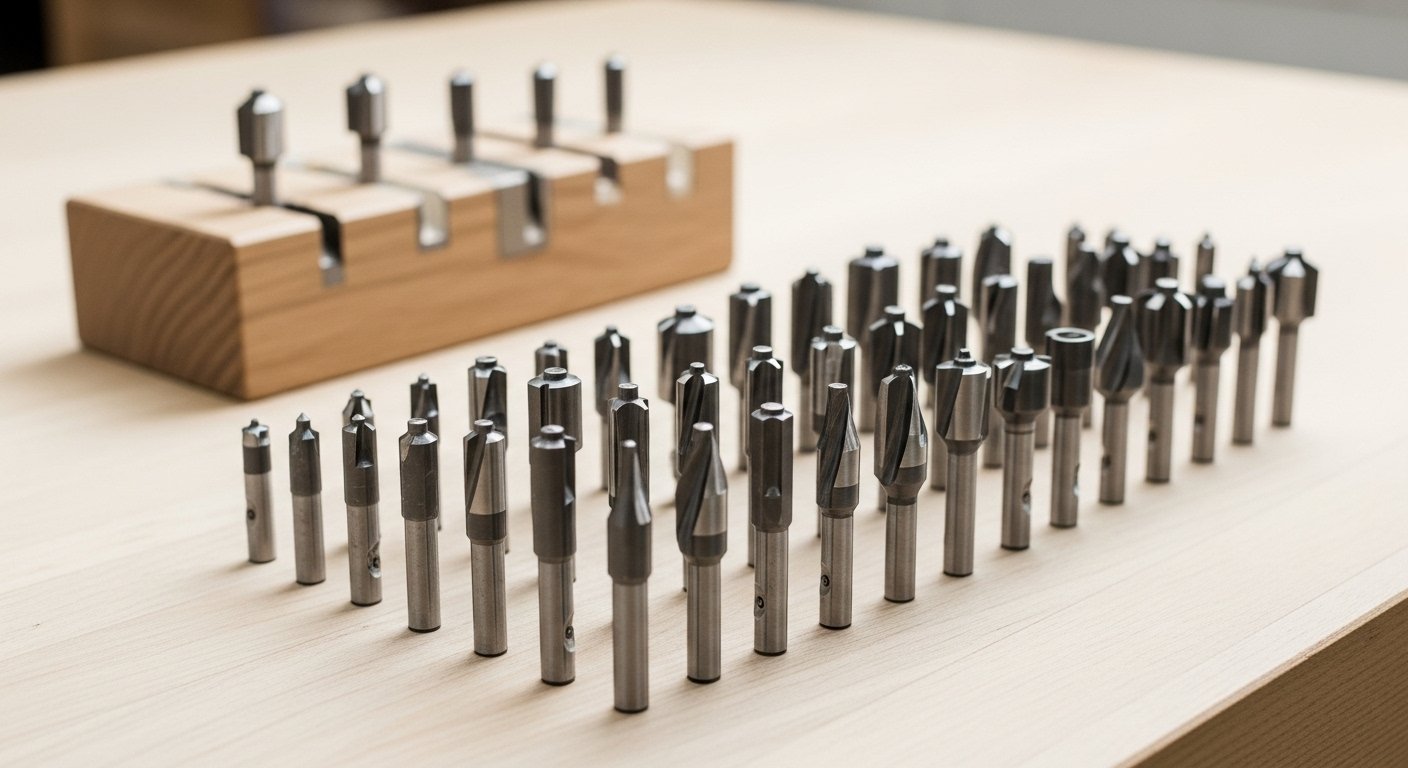Woodworking is an art form that transforms raw timber into beautiful, functional pieces. The secret to durable and aesthetically pleasing woodworking lies in the strength and precision of its joints. As a woodworker, mastering the creation of these connections is paramount, and at the heart of this mastery lies the humble yet incredibly versatile router bit. Choosing the right router bit for woodworking joints is not just about making a cut; it’s about ensuring the longevity, integrity, and beauty of your finished project. This comprehensive guide will equip you with the knowledge to confidently select the ideal router bit for every joint, helping you avoid the common pitfalls that, according to a report by the Woodworking Industry Association, contribute to nearly 70% of woodworking errors stemming from inappropriate tool selection. [3] The global woodworking router bits market, valued at USD 3.55 billion in 2024, is projected to reach USD 5.27 billion by 2032, with a Compound Annual Growth Rate (CAGR) of 5.05%, underscoring the vital role these tools play in the craft.
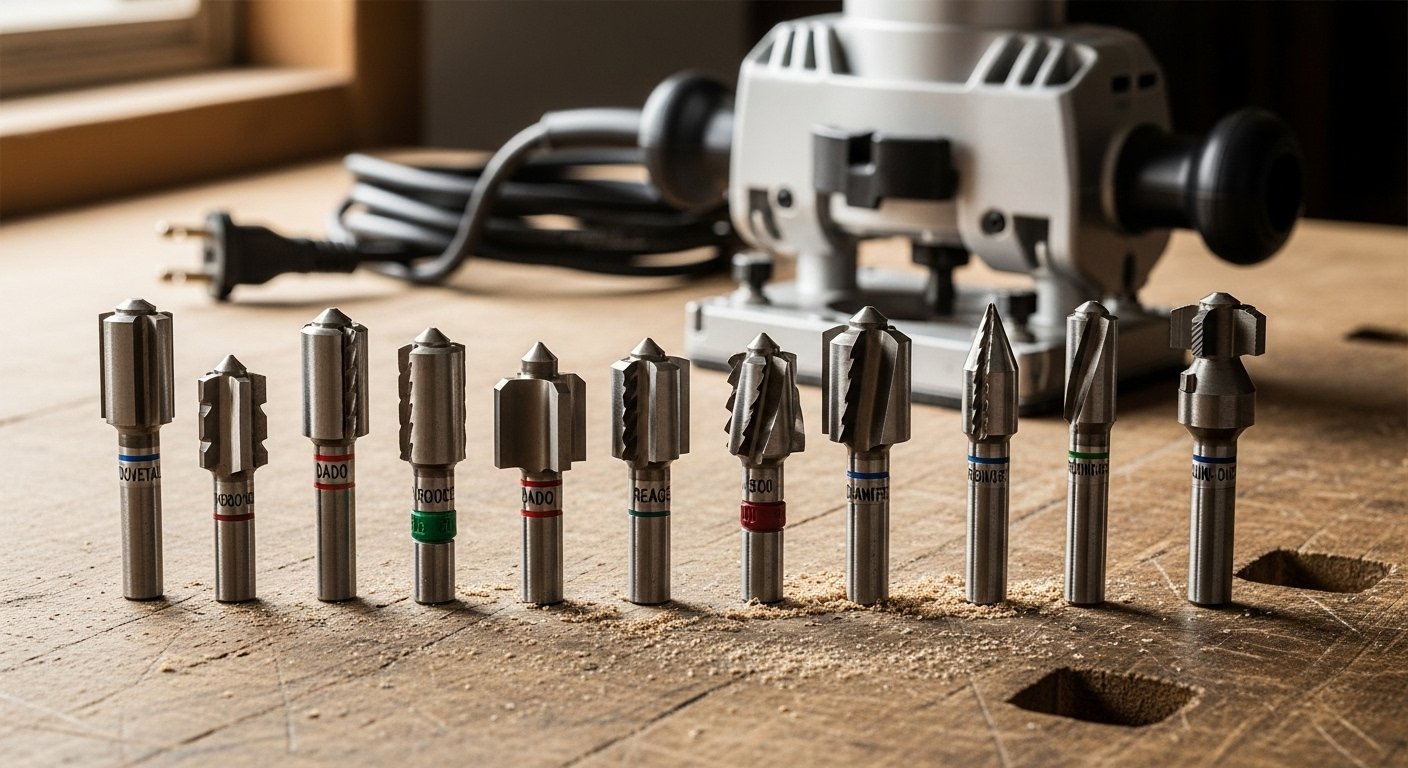
Understanding the Anatomy of Router Bits
Before diving into specific types of router bits for woodworking joints, it’s essential to understand their fundamental components. This knowledge will empower you to make informed decisions about quality, performance, and compatibility.
Shank Size: The Foundation of Stability
The shank is the solid, cylindrical shaft of the router bit that fits into your router’s collet. The two most common Shank Sizes are 1/4 inch and 1/2 inch. While 1/4-inch shanks are generally more affordable and common on smaller routers, 1/2-inch shanks are preferred for most applications due to their superior stability. [3] A larger shank diameter reduces vibration, leading to smoother cuts and extending the life of both the bit and your router. When considering how to choose router bit size, always prioritize the largest shank size your router can accommodate, especially for larger diameter bits or heavier cutting tasks.
Cutting Material: HSS vs. Carbide
The material of the cutting edges significantly impacts a bit’s durability and performance. [3, 6]
- High-Speed Steel (HSS) Bits: These are more budget-friendly and easier to sharpen. However, they dull more quickly, making them better suited for softer woods or lighter, infrequent use. [3, 6]
- Carbide-Tipped Bits: These bits are made by brazing carbide inserts onto a steel body. They are much harder and can hold an edge significantly longer than HSS bits, performing almost 15-20 times longer for woodworking operations due to their superior durability and temperature resistance. [3] While more expensive, their extended service life and ability to tackle hardwoods make them a worthwhile investment for serious woodworkers. [3, 6]
Cutting Edges and Flutes
The cutting edges (or flutes) are the parts that remove material from the workpiece. The number of flutes can vary, with more flutes generally leading to a smoother finish but requiring a slower feed rate. Bits may also include a ball-bearing guide (pilot) for flush trimming or pattern routing, ensuring consistent cuts along an edge or template. [3]
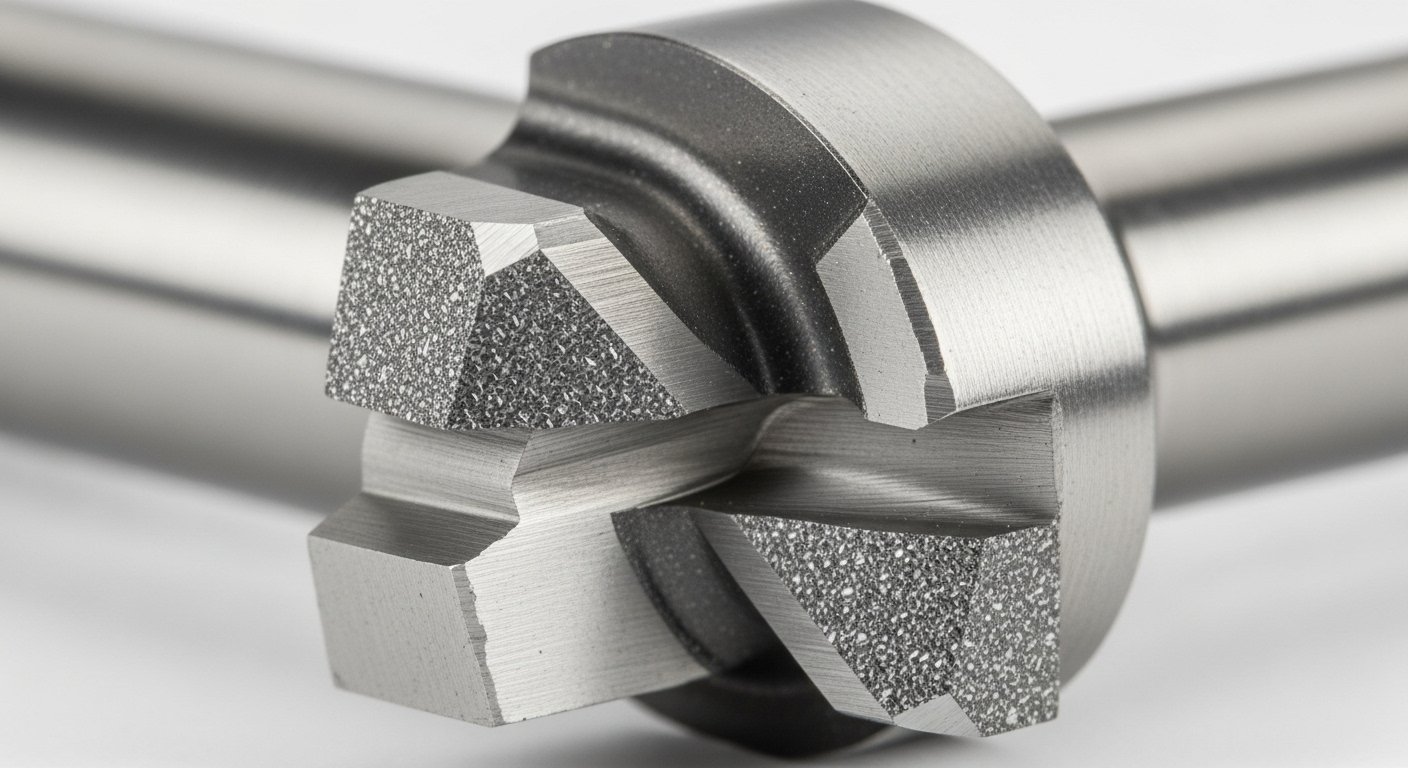
What are the Different Types of Router Bits for Woodworking Joints?
The world of router bits is vast, but when it comes to crafting robust and precise woodworking joints, certain types stand out as indispensable. Understanding the specific function of each bit is crucial for selecting the right one for your project. [2] Here, we’ll explore the essential Types of router bits for joinery, often asked by beginners and experienced woodworkers alike.
Straight Router Bits
Straight Bits are perhaps the most common and fundamental type of router bit. [2, 6] Featuring a flat bottom and straight cutting edges, they excel at creating straight cuts. Their primary uses in joinery include cutting grooves, dadoes (grooves across the wood grain), and rabbets (a step-shaped recess along the edge of a workpiece). [2] These essential cuts form the basis of many fundamental woodworking joints. For example, a dado provides a strong housing for shelves, while a rabbet is often used for cabinet back panels or drawer bottoms.
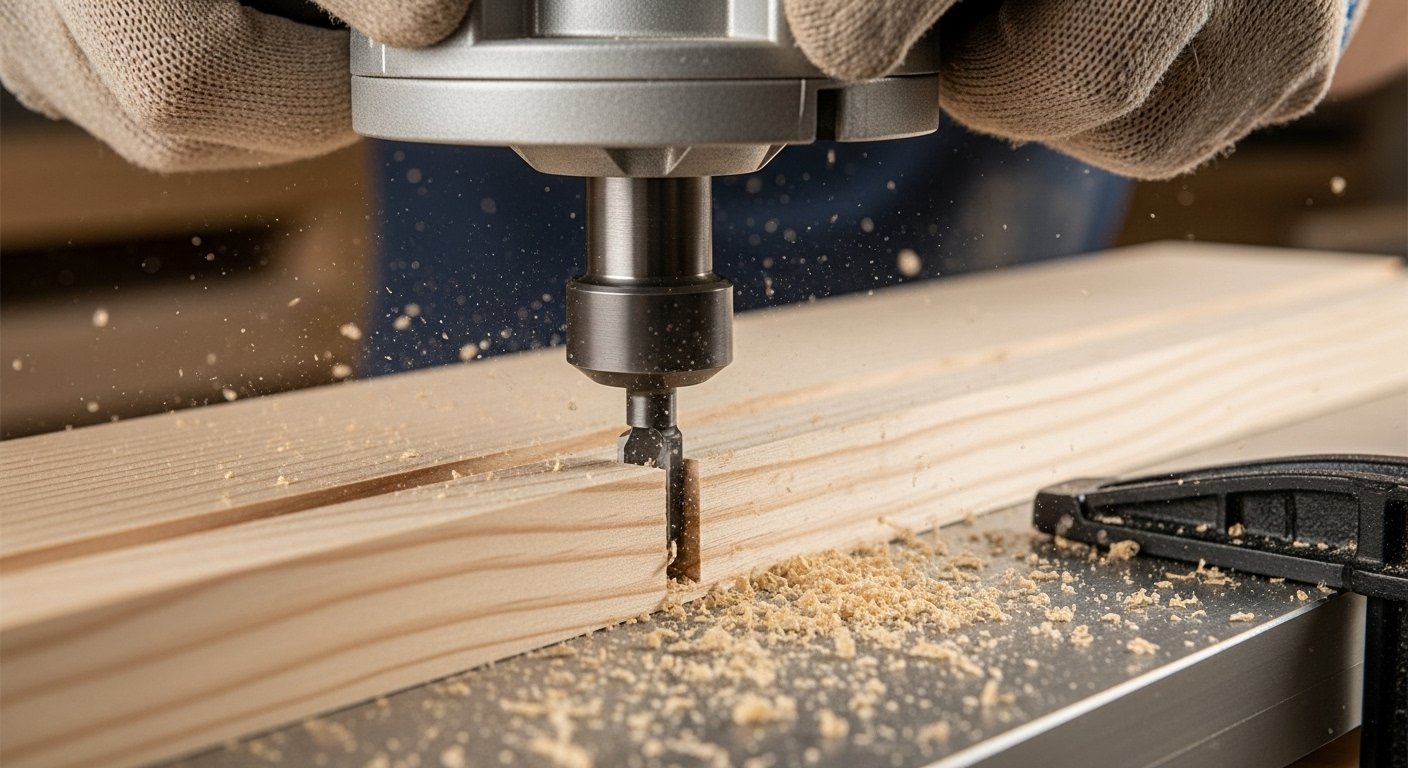
Rabbeting Router Bits
A Rabbeting Bit is specifically designed to create a rabbet joint – a step-shaped recess cut along the edge or end of a workpiece. [2, 6] This joint is commonly used for cabinet backs, drawer bottoms, and fitting doors into frames. Many rabbeting bits come with interchangeable bearings, allowing you to control the depth of the rabbet without changing the bit itself. This versatility makes the Rabbeting Bit one of the most useful router bits for precise edge joinery.
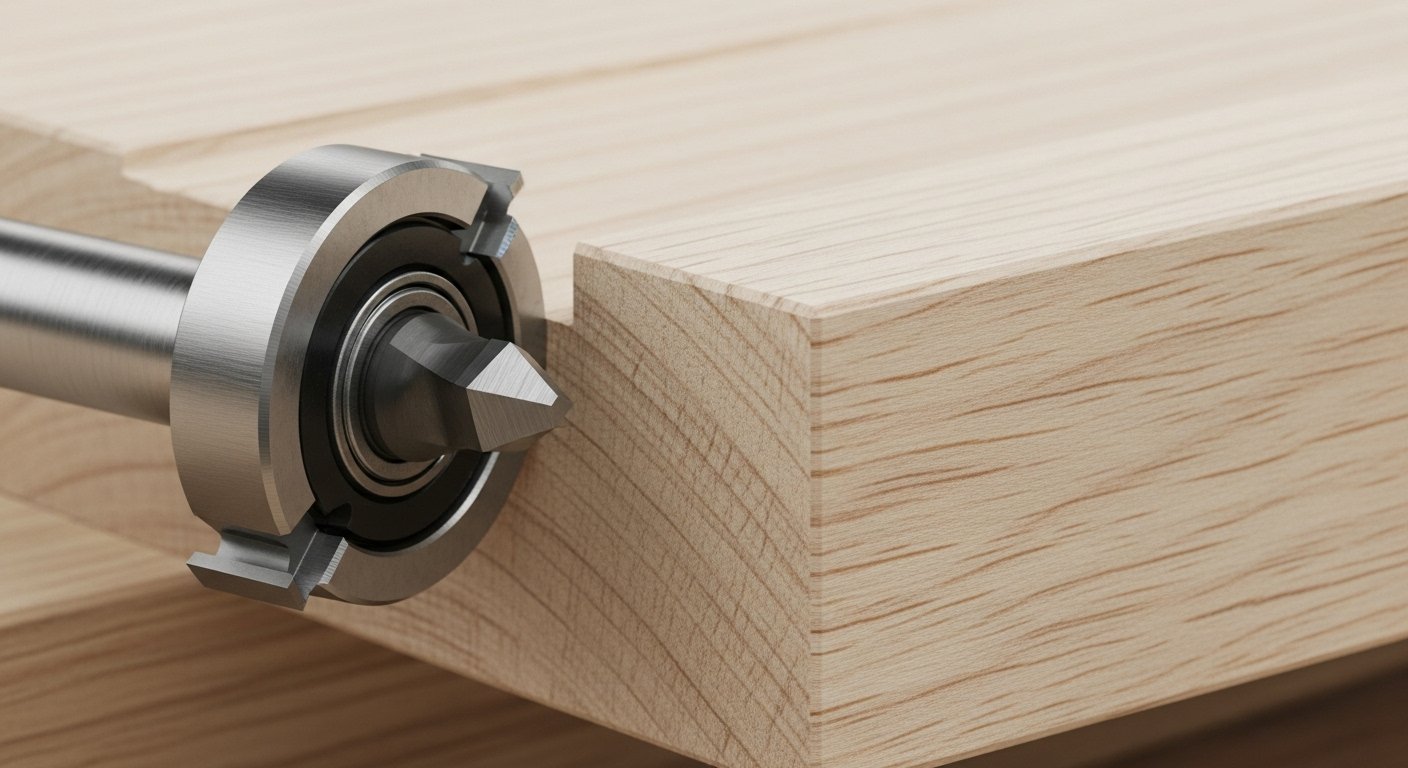
Dovetail Router Bits
The Dovetail Bit is instantly recognizable by its distinctive angled profile. [2] These bits are specifically designed for crafting the iconic and incredibly strong dovetail joint, a hallmark of fine woodworking. [2] Commonly used in drawer and furniture construction, dovetail joints resist pulling apart, making them ideal for high-stress applications. Creating precise dovetails requires careful setup, but the resulting joint is both mechanically robust and aesthetically pleasing. [7]
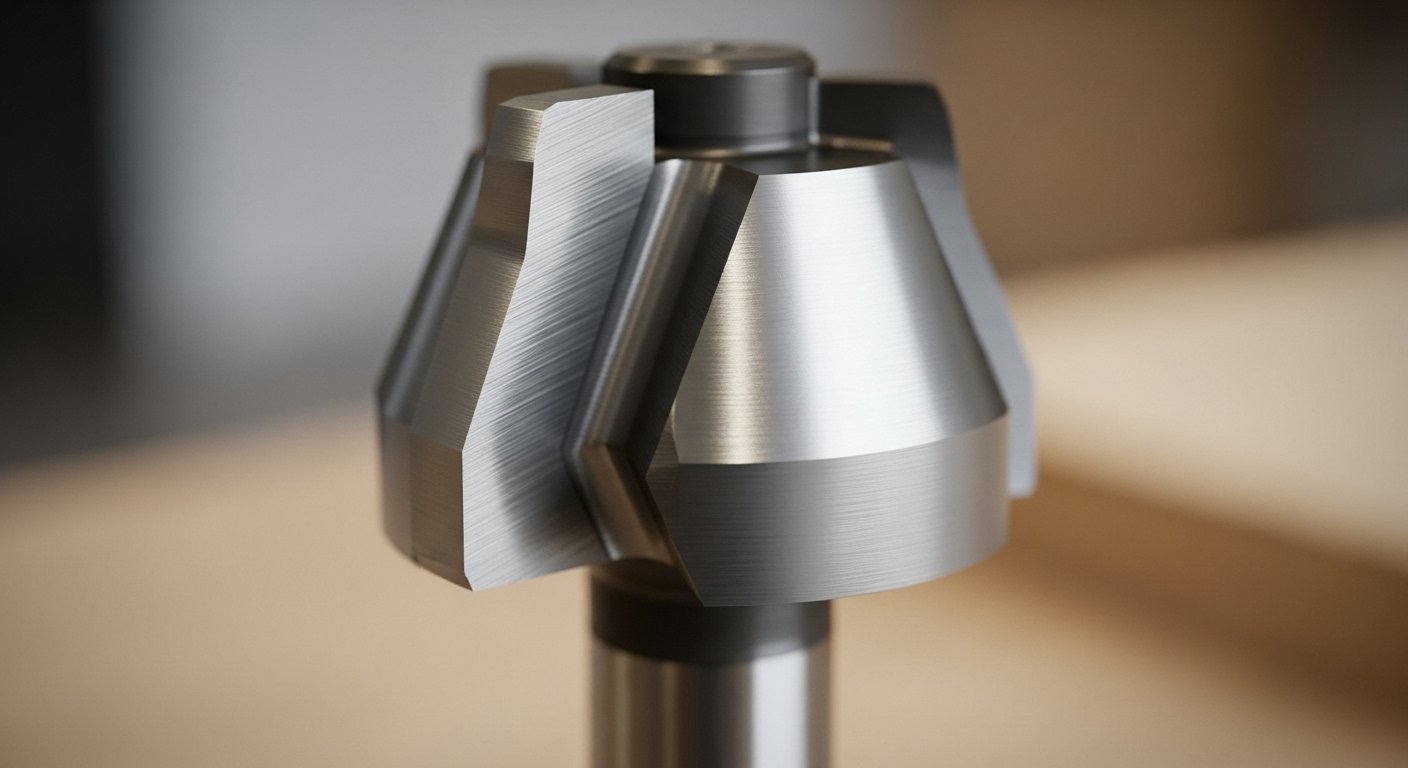
Mortising Router Bits
For creating strong Mortise and Tenon router bit joints, a Mortising Bit is essential. While a plunge router with a straight bit can create a mortise, specialized mortising bits, often featuring a down-cut spiral design, are designed for efficient chip evacuation and clean, square-shouldered cuts. The mortise and tenon joint has been a staple in woodworking for thousands of years due to its strength and ability to join pieces at right angles, particularly in frame construction. [5, 7]
Tongue and Groove Router Bits
Used extensively in flooring, paneling, and cabinet construction, a Tongue and Groove Router Bit set allows you to create interlocking joints that fit together snugly, forming a strong, continuous surface. [4] This set typically includes two bits: one to cut the ‘tongue’ on one edge of a board and another to cut the corresponding ‘groove’ into the adjacent board. The Tongue and Groove Bit Set is invaluable for joining multiple boards to create wider panels without visible fasteners.
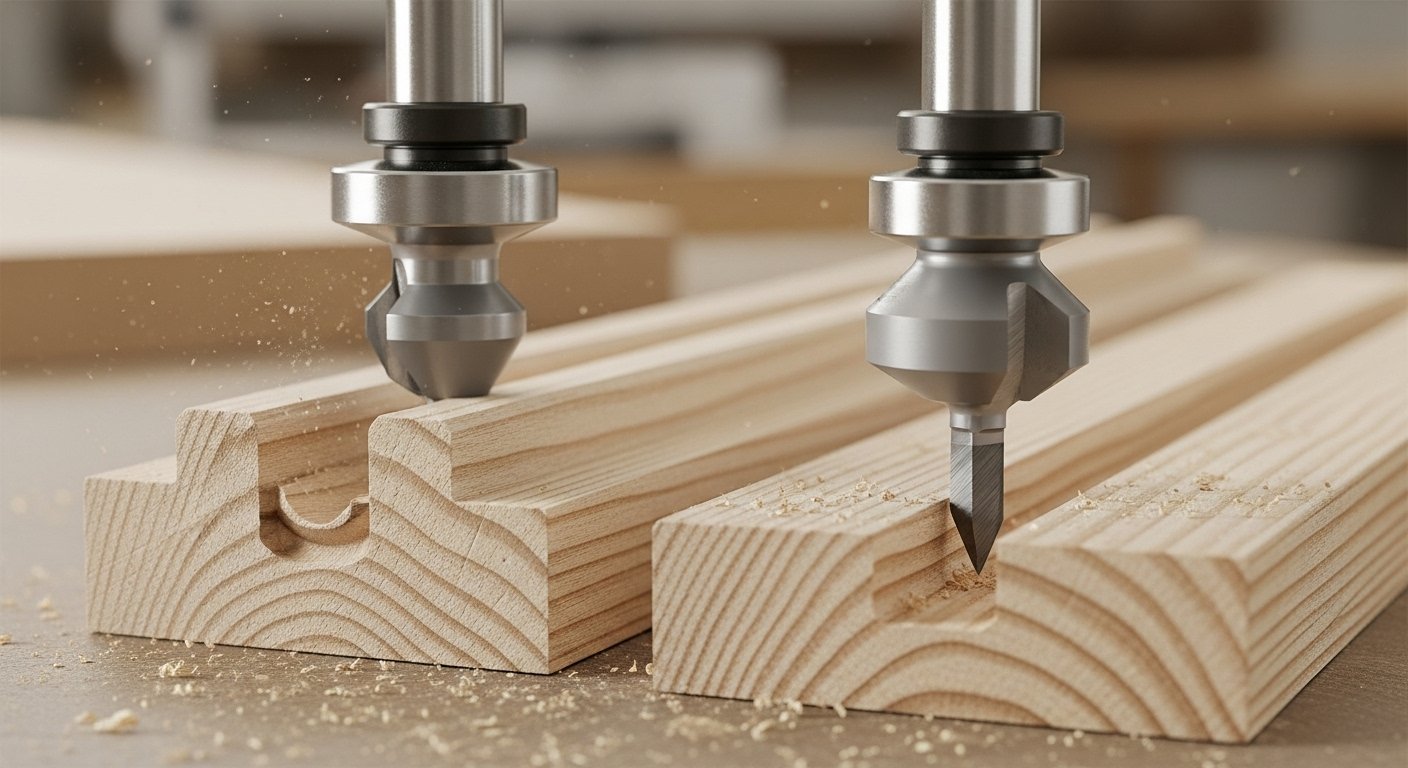
Finger Joint Router Bits
The Finger Joint Bit (also known as a Box Joint Bit) creates a series of interlocking ‘fingers’ that provide a large gluing surface for exceptional strength, particularly in end-grain applications. [4] These joints are commonly found in box construction, drawers, and any application where strong corner joints are needed. While visually distinct, a well-executed finger joint is incredibly durable and resistant to shear forces. [4]
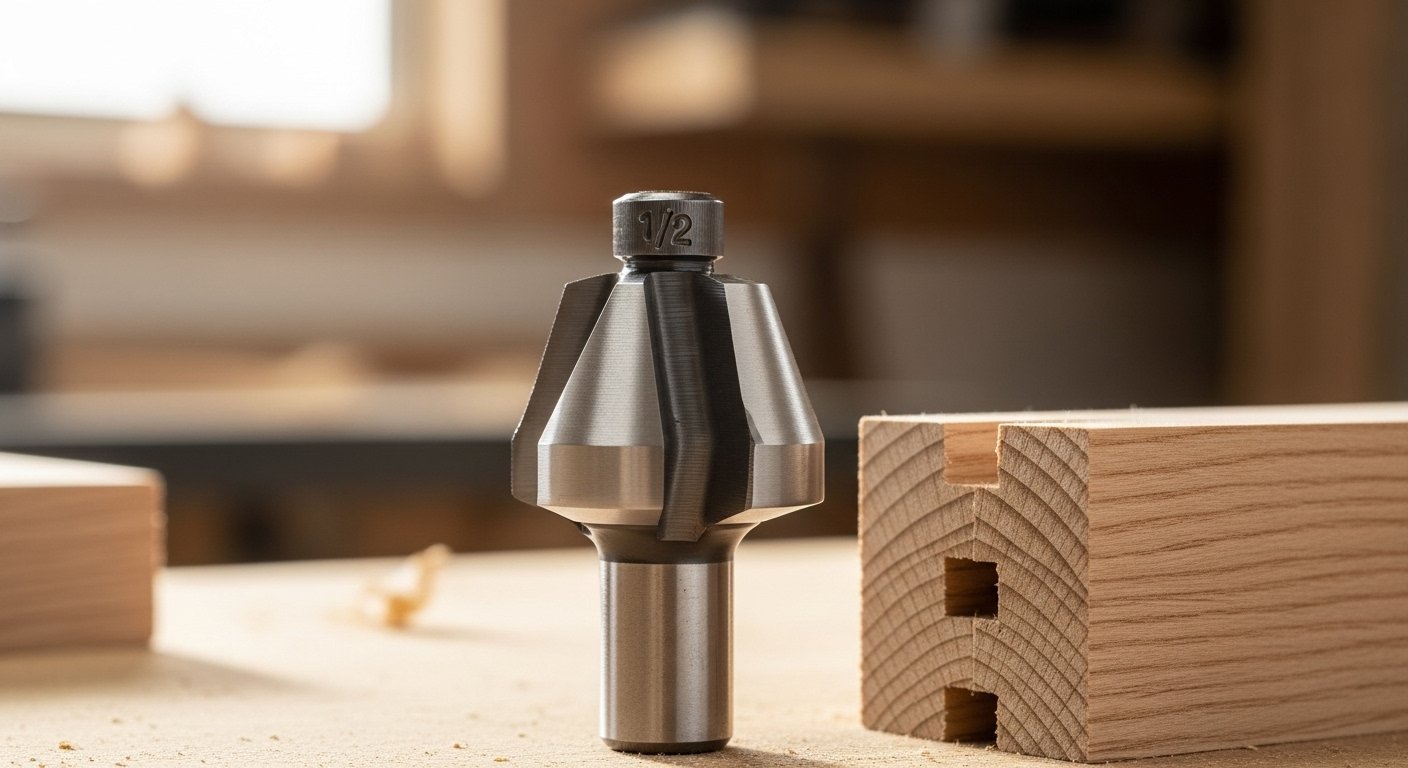
Cope and Stick Router Bit Sets
Cope and Stick Router Bit Sets are specifically designed for crafting the rail and stile joinery used in cabinet doors. This set typically consists of two bits: one for the ‘cope’ cut (a concave profile that matches the stick profile) on the ends of the rails, and another for the ‘stick’ cut (a decorative profile along the inside edge of the rails and stiles). Together, they create a strong, clean-fitting joint that allows for panel expansion and contraction within the frame. [1]
Flush Trim Router Bits
While not exclusively for joinery, Flush Trim Router Bit applications are crucial when using templates to create identical parts, which is often a preliminary step for joinery. These bits feature a bearing that rides along a template, ensuring the router bit cuts the workpiece to the exact shape of the template. This is invaluable for consistency when preparing pieces for intricate joints. [6, 9]
Panel Raising Router Bits
Though primarily decorative, a Panel Raising Router Bit is used in conjunction with cope and stick sets to create the raised panels often found in cabinet doors. It shapes the edges of a flat panel to fit into the ‘stick’ profile of the frame, adding depth and elegance to the finished piece. [2]
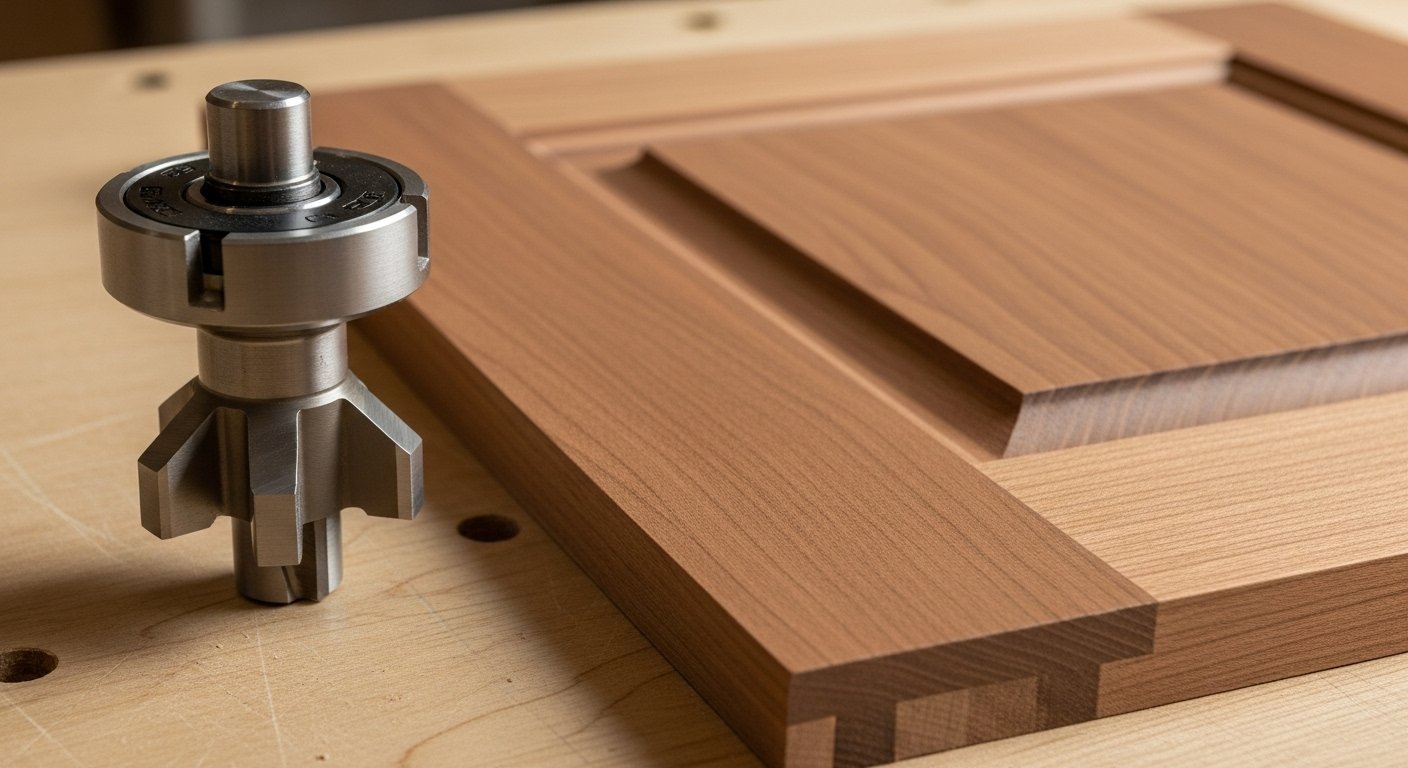
Router Bit Selection Guide: How to Choose Router Bits for Every Woodworking Joint
Selecting the correct router bit is a critical step that directly impacts the success and quality of your woodworking projects. This Router bit selection guide will help you navigate the choices and make confident decisions for achieving strong, precise connections.
Considering the Joint Type
The most fundamental aspect of router bit selection is matching the bit to the specific woodworking joint you intend to create. As we’ve seen, each joint type – from the strong Dovetail Joint to the robust Mortise and Tenon – has dedicated router bits designed to form its unique profile. Always begin by identifying the joint you need, and then select the corresponding bit. Trying to force an unsuitable bit to create a joint will likely lead to poor results, wasted material, and frustration. For a comprehensive overview of different woodworking joints, consult external resources like Wikipedia’s Woodworking Joints page. [1]
Shank Size Matters: What Size Router Bits Are Best?
As previously discussed, Shank Size is a crucial factor. For most serious woodworking, 1/2-inch shank bits are generally superior. They offer greater stability, reduced vibration, and a smoother cut, especially with larger diameter bits or when routing harder woods. If your router accepts both, always opt for the 1/2-inch shank for better performance and safety. However, many smaller routers are limited to 1/4-inch shanks, which are perfectly adequate for lighter tasks and smaller profiles. Always check your router’s collet size before purchasing bits. [3, 10]
Material and Quality: Investing in Durability
While HSS bits are budget-friendly, for creating critical woodworking joints, carbide-tipped bits are almost always the better choice. Their ability to hold a sharp edge longer means cleaner cuts, less burning, and reduced tear-out, especially in hardwoods. 3, 10] Investing in quality router bits, particularly carbide-tipped ones, will save you time and money in the long run by delivering consistent performance and lasting significantly longer. Look for bits from reputable manufacturers, as quality construction translates to better balance, sharper cutters, and safer operation. For more in-depth information on router bit materials and their impact on performance, consider this insightful guide on [router bit types and materials. [2]
Router Bit Profiles for Joints
Beyond the general type, consider the specific Router bit profiles for joints. For instance, while you might use a straight bit for a dado, the exact width of the dado bit must match the thickness of the material it will house for a snug fit. Similarly, dovetail bits come in various angles (e.g., 7°, 9°, 14°), each creating a slightly different joint aesthetic and strength profile. Understanding these subtle variations allows for finer control over your joinery.
Best Router Bits for Strong Joints
When the primary goal is maximum joint strength, certain router bits and the joints they create stand out:
- Dovetail Router Bit: Creates joints renowned for their mechanical strength against pulling forces.
- Mortise and Tenon Router Bit: Produces a classic joint with excellent glue surface area and resistance to racking.
- Finger Joint Bit (Box Joint Bit): Offers a large gluing surface across end grain, resulting in very strong perpendicular connections.
- Tongue and Groove Router Bit Set: Creates strong, self-aligning joints ideal for panels and tabletops.
While the bit itself is critical, the quality of the wood, proper glue application, and accurate cutting techniques are equally important for achieving the strongest possible joints.
What Router Bits Should a Beginner Buy?
For those just starting their woodworking journey, the array of router bits can be daunting. The key is to begin with versatile bits that cover the most common tasks and gradually expand your collection as your skills and projects evolve. [6] When considering Router bits for beginner woodworking, focus on these essential types:
1. Straight Bits: Absolutely fundamental for grooves, dadoes, and rabbets. Start with a few common diameters (e.g., 1/4″, 1/2″).
2. Rabbeting Bits: Invaluable for creating foundational joinery elements in many projects.
3. Roundover Bits (Optional for Joinery, but highly versatile): While not for joinery directly, these are excellent for softening edges and are incredibly versatile for general woodworking, making them a common recommendation for beginners.
4. Dovetail Bit (for aspiring joiners): If you’re eager to tackle classic joinery, a single dovetail bit (e.g., 14°) can open up a world of possibilities.
Considering a quality Router bit set for woodworking can be a cost-effective way to acquire a range of essential profiles. Look for sets that prioritize joinery and utility bits over purely decorative ones. Remember, patience and practice are your best tools alongside these bits. For further guidance on getting started in woodworking, explore our guide on 10 essential woodworking tools for beginners.
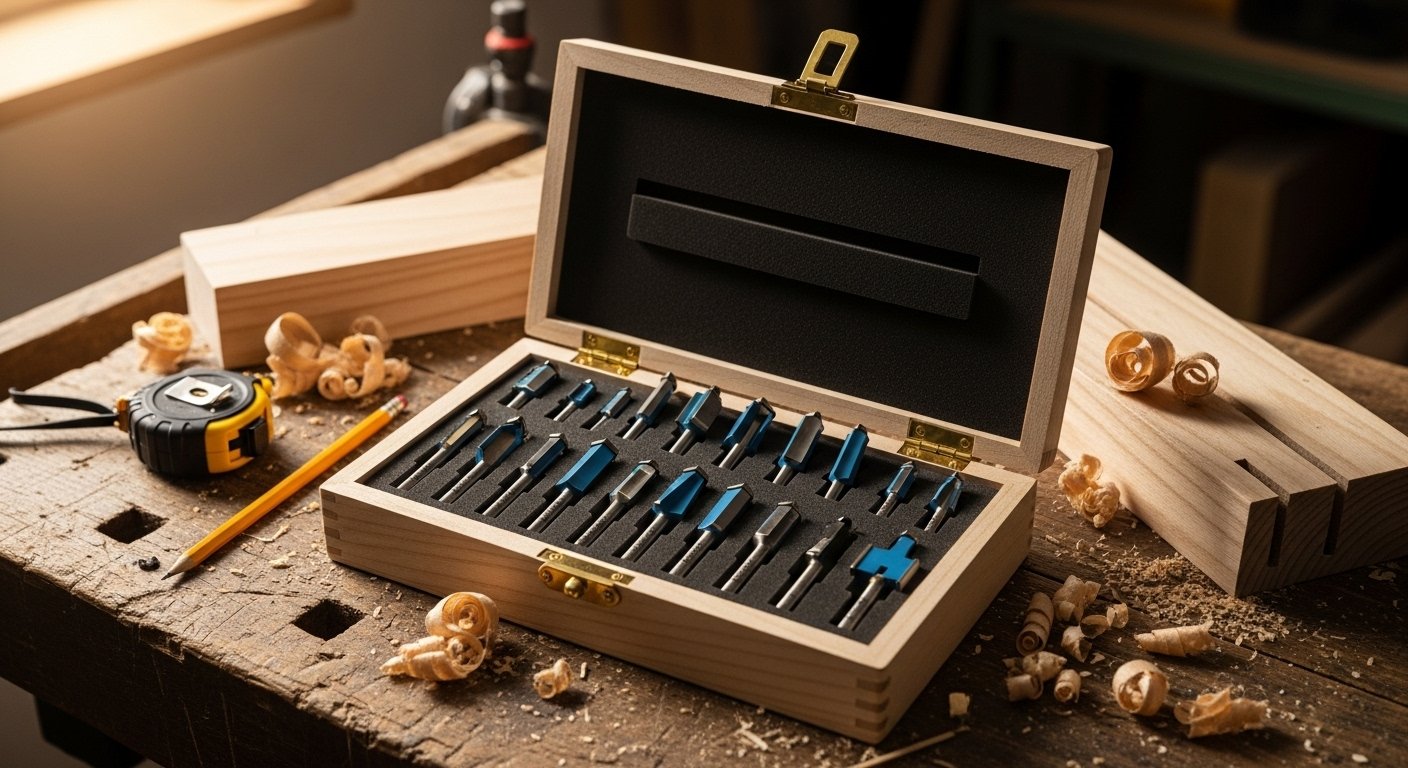
Maximizing Your Router Bit Investment
Once you’ve invested in quality router bits for woodworking joints, proper care and usage are vital to maximize their lifespan and maintain performance. Always ensure bits are clean after use, removing any resin buildup that can cause friction and burning. Store them safely in a dedicated case to protect their delicate cutting edges. Adhering to proper feed rates and router speeds for the material you are cutting will prevent overheating and premature dulling. 2] Explore our [Power Tool Maintenance for Longevity article for more tips on keeping all your tools in top condition. For expanding your workshop capabilities, consider our guide on the Top 7 Power Tools to Transform Your Workshop.
Conclusion
Choosing the right router bit for every woodworking joint is a skill developed through understanding, practice, and a keen eye for detail. By familiarizing yourself with the anatomy of router bits, recognizing the specific functions of each joinery bit, and applying a thoughtful selection process, you empower yourself to create woodworking projects that are not only beautiful but also built to last. Remember the importance of shank size, cutting material, and matching the bit profile to your desired joint. With this knowledge, you are well on your way to mastering the art of joinery and crafting pieces with unwavering strength and precision. Happy routing!
